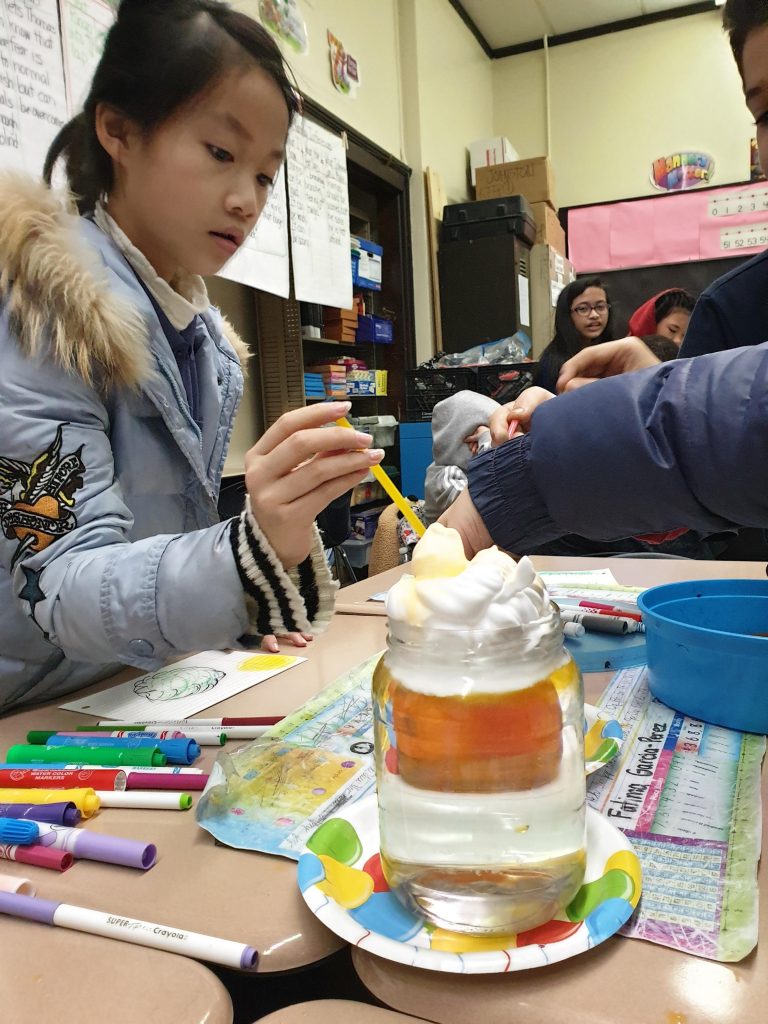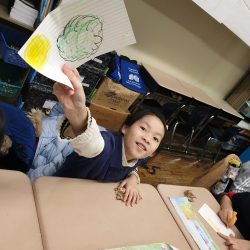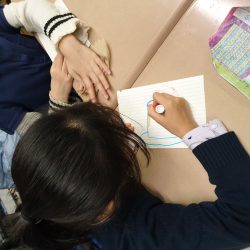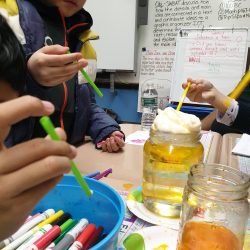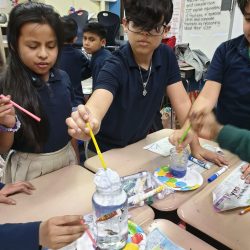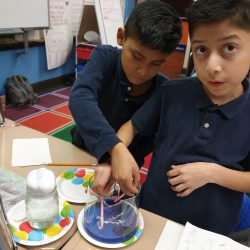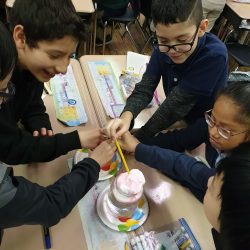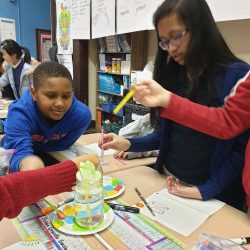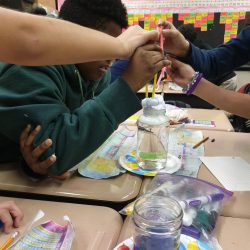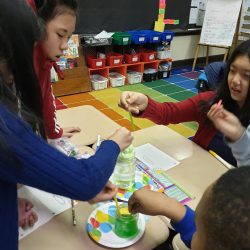If you stare up at the sky, there are many types of clouds that you might see given the day. Clouds are formed as droplets of water rise with warm air and cool as they combine with other droplets in the air. They get their white color from the reflection of light from the sun. however, rain clouds turn gray because they hold so much water that the light cannot reflect. We brought a fun science experiment to our class at Southwark this week so that our students could learn about clouds and rain in a fun and hands on way.
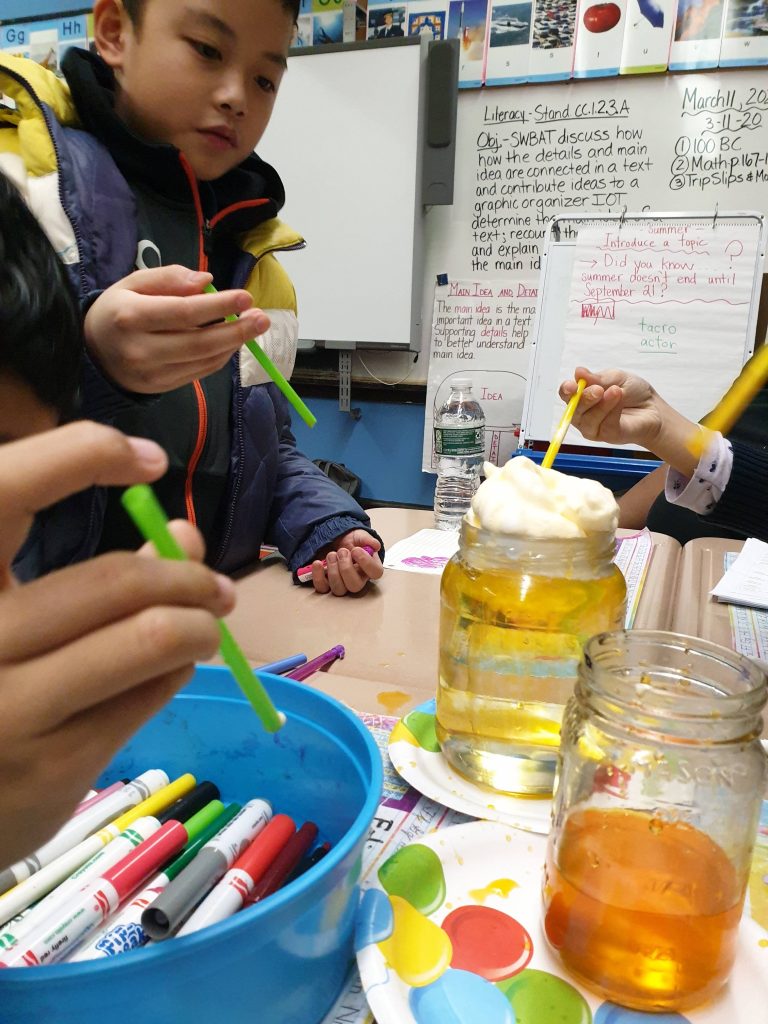
We went through the types of clouds first with the students.
- Cumulus- the fluffy clouds that we often see shapes in
- cumulonimbus- bigger darker clouds that mean a storm is coming
- Cirrus clouds are high in the sky. They are wispy and small.
- Cirrostratus clouds are high and thin. They look like a big, rippling sheet across the sky
Materials:
- jars
- cups to mix food dye
- water
- food dye
- straws
- shaving cream
Directions:
- fill the jars 3/4 with water. The water in this case represents the air. One jar per student or per group
- Mix the food dye in the cups with water. This will be the rain
- Spray the shaving cream on the top of the water. It can be over the rim of the jar, and this will represent the cloud
- Hand each student a straw. They can use this to draw up colored water and let it drop into the cloud of shaving cream. The drops should collect in the shaving cream until it can no longer hold any more liquid and the colored water will start trickling into the water in the jar making it “rain.”
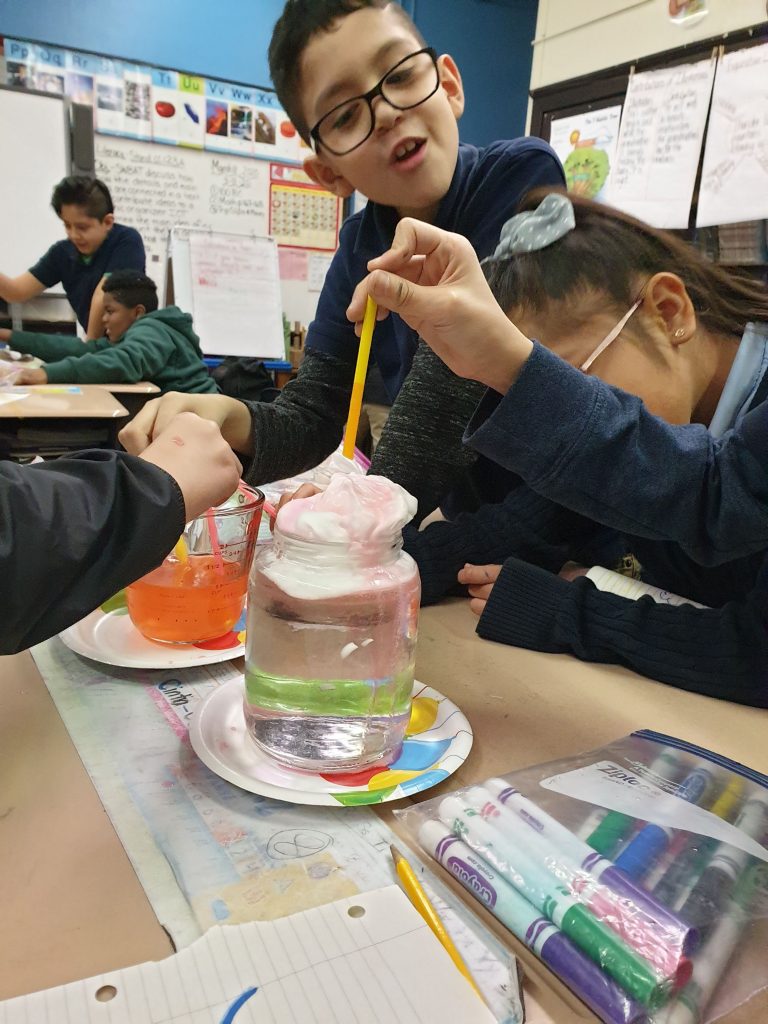
This experiment allowed the class to have a physical representation of how water builds up in clouds and forms rain. Our students had a really fun time experimenting with the colored water and making rain clouds in their jars. We had them work in groups which allowed them to work through the best way to drop water into the clouds and how much they needed to. We also asked that they draw a representation of the clouds and sky one would see on a sunny day. After the experiment, we asked them to draw the rainstorm they made in the jar and asked them what had happened throughout the activity. Overall, we were able to see that they were able
